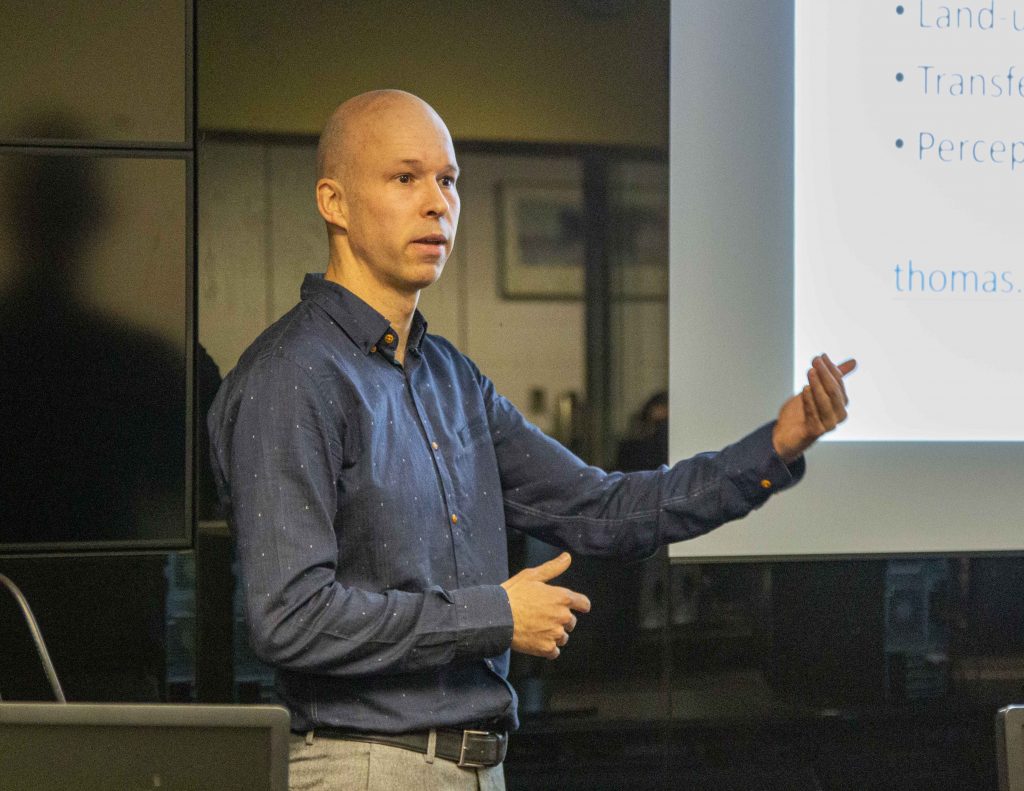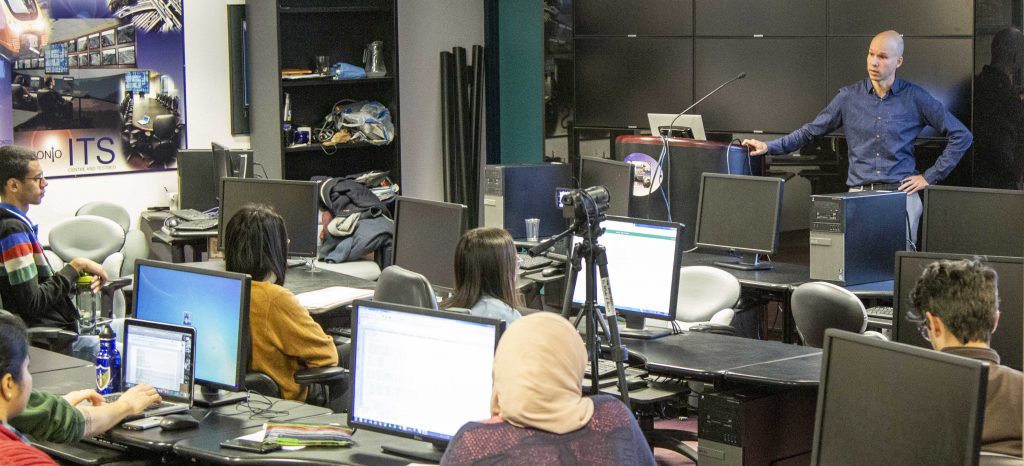
Providing accessible transit systems is a major challenge for transportation planners nowadays.
Thomas Straatemeier, a Dutch transport planner, was at University of Toronto to give a talk on strategies to improve accessibility in cities. His seminar ‘Transportation planning to support access to opportunity- a Dutch perspective” was part of the UT-ITE seminar series held on November 22, 2019.
The seminar provided a broad comparison of the transit systems in the Netherlands and Toronto. Straatemeier highlighted differences in ridership for different modes in both cities. Some interesting comparisons are shown below:
| Ridership | Greater Golden Horseshoe (GGH)* | The Netherlands | |
| Cycling and biking |
8% |
45% |
|
| Cars |
77% |
47% |
|
| Transit (buses and rail) |
12% |
5% |
*Toronto
Some of the other interesting topics covered in the seminar were:
- The relation between ‘use of time’ and the ‘value of time’ during commute.
- Intercity nodes promote 50% of the trips downtown; what are such possible nodes in the GGH?
- What are the ‘gains’ in smart mobility?
Next, Straatemier explained planning strategies implemented in the Netherlands to promote walking and cycling included infrastructure, for example:
- Building designated roads with different textures for cyclists
- Building a network where bikes are provided to complete the last mile connectivity of public transit
The Dutch primarily focus on user experience and comfort of the riders.

Abstract
When we talk about transport or see it discussed by the media, the focus often seems to be on delays, congestion, poor transit service, etc. This emphasis on problems and bottlenecks is also visible in current transportation planning and the indicators and models that support transport policy making. This seminar proposes a different approach to transportation planning, one that places opportunity and improving travelers’ experience, as opposed to problems, at the centre of policy making. Examples from Thomas and his experience as a transport planner in the Netherlands will be used to illustrate this approach.

Thomas Straatemeier worked as a sustainable urban transportation planner in the Netherlands for 20 years. He worked with the City of Amsterdam, and as a researcher at the University of Amsterdam, where he received his PhD in 2019, and as a senior consultant for Goudappel Coffeng.
Thomas recently moved to Toronto for one year and joined the firm Access Planning to contribute to attractive cities and sustainable urban transportation in a different context.
Thomas specializes in strategic transportation planning on city, regional and national levels, with a special interest in promoting the use of cycling and transit transport alongside land-use integration.
This seminar was presented by the University of Toronto Institute of Transportation Engineers (ITE) Student Chapter.
